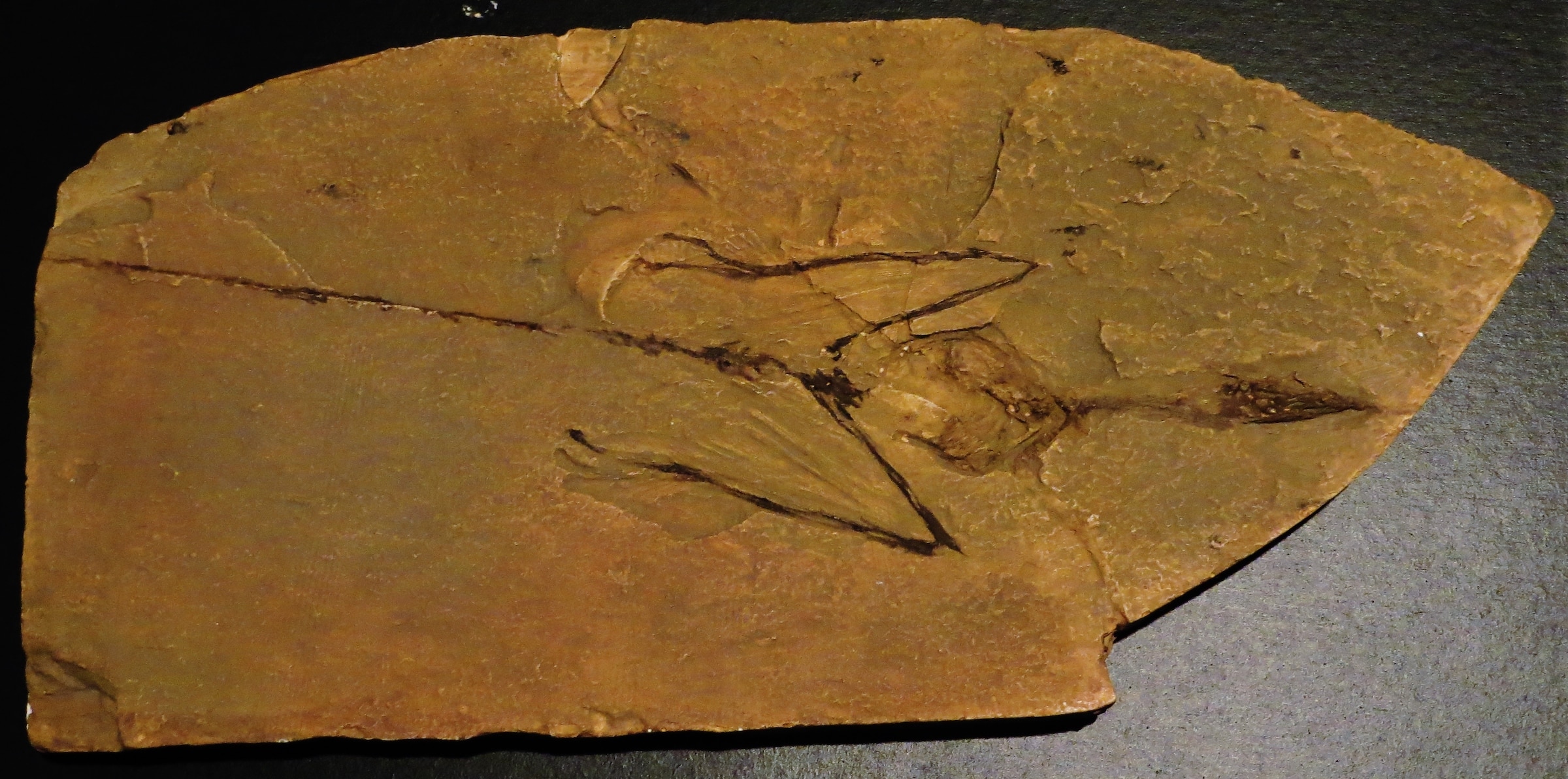 Evolution
Evolution
 Intelligent Design
Intelligent Design
 Paleontology
Paleontology
Fossil Friday: The Explosive Origin of Flying Reptiles in the Mid Triassic

This Fossil Friday features the gliding reptile Sharovipteryx mirabilis from the Mid Triassic of Central Asia.
Within only two million years of the Mid-Triassic era (about 230-228 million years ago) there was a sudden appearance of a large diversity of gliding and flying reptiles, such as Sharovipteryx with wings on the legs, Mecistotrachelos and the unrelated Kuehneosauridae with a gliding membrane across lateral rib-like projections, Longisquama with long feather-like scales on the back, and the earliest pterosaurs such as Preondactylus with bat-like wings supported by a single enlarged finger.
Considerable Re-Engineering
All these very different solutions for gliding and active flight required considerable re-engineering of the tetrapod body plan, and such biological novelty arguably required new and highly specific genetic code. Such specified information cannot be produced by blind mechanisms and certainly not in such a short window of time of only two million years, which corresponds to just about half the average longevity of a vertebrate species.
Personally, I am quite sympathetic to the dissenting view of my paleontologist colleague Simon Conway Morris, who suggested that evolution does not work through a blind and random mechanism, but rather like a search engine that searches for pre-existing platonic forms in a constrained hyperspace of biological possibilities. However, this would no longer be Darwinian evolution but a highly teleological process and thus a kind of intelligent design combined with platonist idealism as metaphysics.
Whatever the mechanism of design may have been, the abrupt origin of flying reptiles is just one example within a kind of carpet bombing of biological explosions during the Triassic era, when many new orders and families of metazoan animals suddenly appeared after the end-Permian mass extinction event. This has been called the Early Triassic Metazoan Radiation, and includes marine invertebrates (e.g., bivalves and ceratite cephalopods), insects (e.g., coleopterans and dipterans), 15 different families and body plans of marine reptiles (Bechly 2023), as well as the first representatives of modern terrestrial tetrapod taxa that appeared suddenly within a short window of time between 251-240 million years ago (Ezcurra 2010). The latter include the first dinosaurs (Nyasasaurus), the first lizard-relatives (Lepidosauromorpha such as Paliguana), the first croc-relatives (Crurotarsi such as Ctenodiscosaurus), the first mammal-like animals (Mammaliaformes such as Haramiyida), and allegedly the first turtles (Pappochelys) even though this is more dubious (Bechly 2022).
Goal-Directed and Intelligent
The well-known paleontologist Peter Ward, who is an ardent Darwinist and a strong opponent of intelligent design theory, explicitly acknowledged that “the diversity of Triassic animal plans is analogous to the diversity of marine body plans that resulted from the Cambrian Explosion. It also occurred for nearly the same reasons and, as will be shown, was as important for animal life on land as the Cambrian Explosion was for marine animal life” (Ward 2006:160). I totally agree that all these explosions occurred for the same reasons and by the same causes, which must have been goal-directed and intelligent.
References
- Bechly G 2022. Fossil Friday: Turtles All the Way Down. Evolution News July 1, 2022. https://evolutionnews.org/2022/07/fossil-friday-turtles-all-the-way-down/
- Bechly G 2023. Fossil Friday: The Triassic Explosion of Marine Reptiles. Evolution News March 31, 2023. https://evolutionnews.org/2023/03/fossil-friday-the-triassic-explosion-of-marine-reptiles/
- Ezcurra MD 2010. Biogeography of Triassic tetrapods: evidence for provincialism and driven sympatric cladogenesis in the early evolution of modern tetrapod lineages. Proceedings of the Royal Society B 277(1693), 2547–2552. DOI: https://doi.org/10.1098/rspb.2010.0508
- Ward PD 2006. Out of Thin Air. Joseph Henry Press, Washington (DC), 296 pp. https://books.google.at/books?id=baJVAgAAQBAJ
